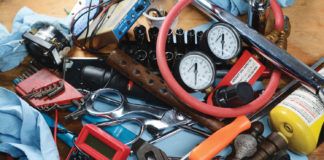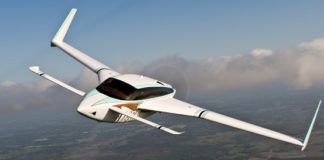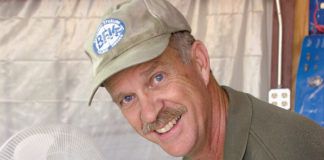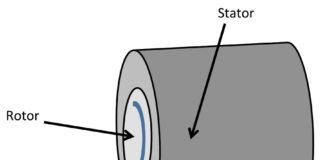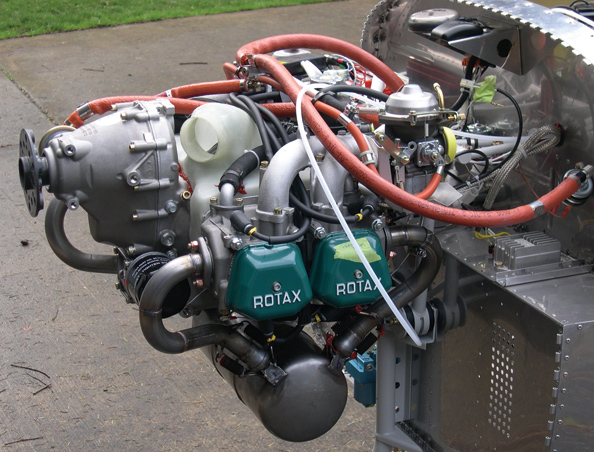
When it’s time to preflight an airplane, most pilots open the cowl or peer through the oil door, make sure the engine is there, check the oil, and move on. They spare neither glance nor thought for the simple structure that connects the power to the pilot: the engine mount. Simple and plain as they might be, engine mounts really deserve more respect.
Mounts do several essential jobs. First, they hold the engine on the airframe. That part is easy enough: Just make some sort of structure out of whatever is strong enough, and then bolt the engine on one end and the airframe on the other. But it isn’t enough to just attach an engine to a firewall. The exact placement is important. Designers must consider the thrust line of the engine, and how high or low it should be relative to the airframe. Then there’s gyroscopic precession-or P-factor.
Most tractor airplanes with American engines (turning clockwise when viewed from the rear) tend to swing to the left, especially when power is applied on takeoff and the aerodynamic authority of the tail surfaces is at a minimum. Designers compensate by pointing the thrust line of the engine slightly to the right. (Your airplane has a British engine? Well, of course it turns the other way. These are the people who brought you the positive ground electric system. Point such engines to the left.) The engine mount is carefully constructed with these angles built in, so that when the engine is mounted it is in the proper location and aimed in exactly the right direction to make the airframe fly correctly.
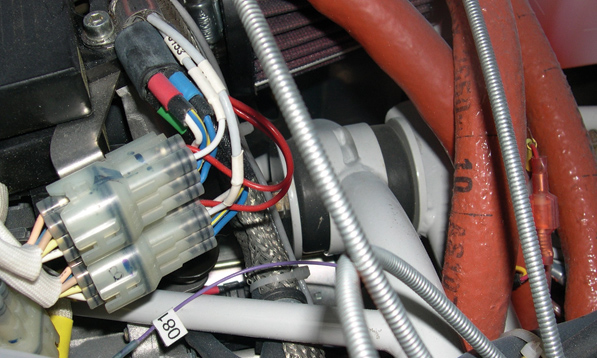
Load for the Road
Because the engine is usually the heaviest component in a small airplane, its location is critical to the all-important center of gravity. Turbine engines are light compared to piston engines of roughly the same power, which is why airplanes converted from piston to turbine engines have long engine mounts and Pinocchio-like noses; the lighter engine must be farther forward to keep the CG in the right place. Conversely, airplanes that carry their loads farther forward, like Van’s new RV-12, require short mounts to keep the engine as far aft as possible.
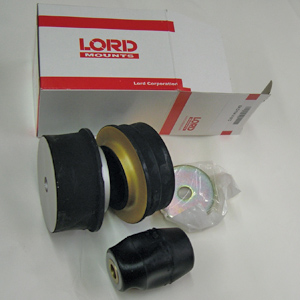
Not only does the engine mount locate the engine, it also transmits the motive power to the airframe. A big airplane engine and propeller can deliver several hundred pounds of thrust. The engine mount might be in compression in a pusher design as thrust squeezes the mount between engine and airframe, or in tension in a tractor, where thrust tries to stretch the mount and pull it away from the firewall. In either case the mount must be capable of transmitting all the thrust to the airframe without distorting or flexing.
Thrust loads aren’t the only loads an engine mount sees. In typical light airplanes, there is anywhere from 120 to 500 pounds of metal hanging off the noisy end, all of it constantly vibrating, moving and shaking. Imagine the forces involved in a 3-G pull-up, where aerodynamic forces accelerate the airframe upward, and inertia tries to keep the engine going straight ahead. Now multiply that three or four times for the extreme aerobatic machines that perform astounding gyroscopic maneuvers in competitions and airshows.
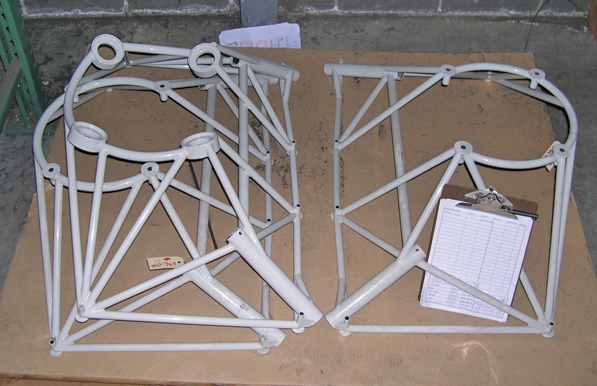
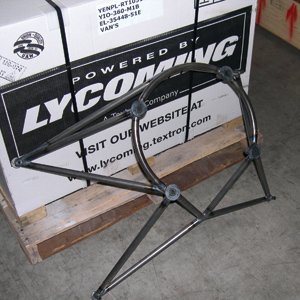
How They’re Made
In the early days, engine mounts were made from a variety of materials. The heavy water-cooled OX-5 V-8 in the Curtiss Jenny rested on wood beams, and there are even stories of early airplanes with engine mounts made of bamboo! But quickly designers settled on trusses of welded steel tubing. Such mounts have been standard in light aircraft ever since.
Steel tube-particularly a chrome-moly alloy like 4130-has all the characteristics for the job. It is available in a wide array of sizes and is strong in both compression and tension, so relatively small diameters and wall thickness can carry the loads. This means a mount can be light, and lightness is always a good thing in airplanes. Such a mount is easily bent and cut. It welds easily. Perfect.
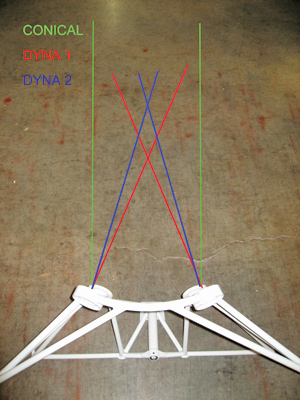
Mounts may support and connect to engines in different ways. Big Continental engines and many of the automotive conversions use bed mounts that extend the length of the engine and cradle it from below. Inline engines like the two-stroke Rotax series use bed mounts as well. Opposed-cylinder Lycomings are universally mounted at four points on the rear (rear meaning the end of the engine opposite the propeller-it is actually the front in a pusher installation). Small opposed Continentals are also mounted from the rear with conical mounts. Rotax four-strokes use a somewhat different mount at the rear, but with the bolts going at right angles to the crankshaft.
Before an engine mount can be fabricated, the builder has to know where it starts and where it ends-in other words, the attach points of the mount on the airframe and on the engine-and locate those points in three-dimensional space. This requires building a fixture, or jig, that will hold the fittings that attach to the firewall and the engine solidly in place while the intervening steel tubes are fitted and welded.
For the one-off homebuilt, a jig can be constructed of plywood and particleboard. If it chars during the welding, no matter-it has done its job. For production engine mounts, the fixture is a permanent, often fairly massive, structure of steel and aluminum. Attached clamps quickly secure and release the components as construction progresses. As each weld is made and cools, the entire structure will want to pull one way or another. Skilled engine-mount welders develop specific patterns of welding that allow these movements to cancel each other out, so the finished mount ends up straight and true.
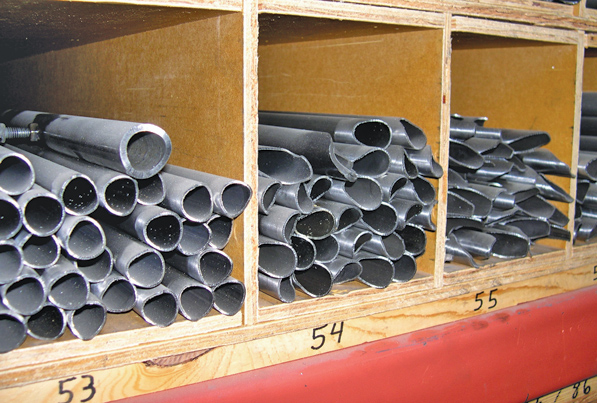
Rust Me Not
With welding finished, the mount must be protected from corrosion. Chrome-moly steel will rust quite quickly, especially after the heat of welding burns away any protective oils left from manufacture. Traditionally, boiled linseed oil has been sloshed and swirled inside any tubes left open to the atmosphere. Tubes that are completely sealed by welding aren’t susceptible to moisture in the air and will resist internal corrosion for a long time.
The outside of the mount is often painted with a good primer/paint combination, but getting paint into all the crevices of a tubing cluster, or completely painting one tube when it is shadowed by another that overlaps it, can be difficult. Many manufacturers have resorted to powder-coating-a process where dry paint particles are electrically charged and applied to a mount with the opposite charge. Particles adhere evenly and completely, getting into every weld bead, nook and cranny. The mount is then placed in an oven and heated until the paint particles melt and flow together. The result is a tough, completely intact coating that covers without voids or shadows. Many mounts can be powder-coated at the same time, making the process efficient and inexpensive.
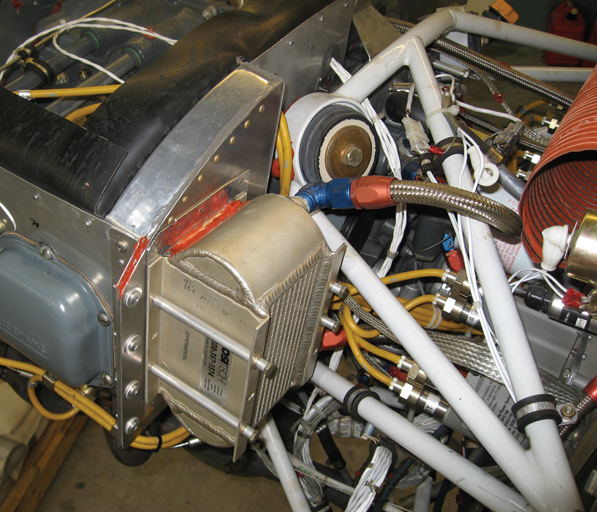
What Kills Them
A properly designed, built and protected engine mount can last for decades, but it is not immortal. Danny Albee, of Kosala and Associates, Inc., in Albany, Georgia, and Gary Montpelier of Aero Engine Mount LLC, in upstate New York, have spent years inspecting and repairing engine mounts. They agree that a pilot’s first line of defense is a careful inspection at least annually, and immediately if the airplane has suffered a heavy landing or other misfortune.
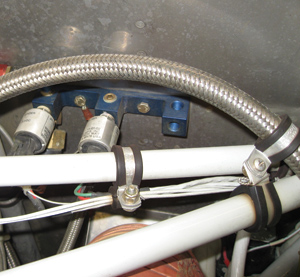
“We use a 10x magnifying glass and a bright flashlight to look for cracks, especially around welds,” says Albee. “If the mount has been in service for quite awhile, we might find what we call ‘compression knots’-mushrooming bulges where repeated stresses have actually deformed the tubing.” Montpelier recommends exactly the same light/magnifying glass technique and adds his own tip: “Clean the mount as well as you can before you inspect it, but use something like 409 rather than a solvent. Solvents will clean up all the greasy fingerprints, sure, but they also soften the surface of the paint and smear it around. You might be covering up the evidence of damage you’re trying to find.”
Both men mentioned the damage that clamps, wires and even plastic tie-wraps can wreak upon steel tubing, but reserved their strongest caution for control cables, especially those with metal-wound housings. “Little saws,” they both called them, using exactly the same words. Anything that clamps or potentially rubs against an engine mount should have some sort of anti-chafe pad installed. “Most manufacturers allow a 10% reduction in tubing wall thickness,” says Montpelier. “But in a tube with a 1⁄8-inch-thick wall, that’s only 12⁄1000 of an inch. A cable can do that kind of damage quicker than most people realize, and the fix usually requires removing the tubing section from the mount and welding a new one in.” Obviously, that can’t be done with the mount on the airplane, so a small bit of negligence can turn into a major repair, requiring removal of the engine and engine mount from the airplane and re-installing them later. Actually repairing the mount is the shortest part of a long, expensive job.
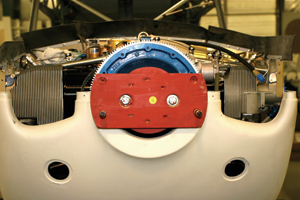
Shakin’, Bakin’
After general wear and tear, vibration and corrosion are an engine mount’s worst enemies. Vibration and impact can lead to cracks, particularly around welds. It calls for a bright light and a focused eye to find small cracks-and it’s even tougher if the mount is painted black. “We like to paint mounts a light color-light gray or even white,” Montpelier said. “Cracks, even very small ones, tend to appear as dark hairlines, and they are much easier to find if the mount isn’t dark, too.” In most cases, cracked engine mounts are good candidates for a welded repair. If the damage is caught early enough, a simple weld or patch may do the job. If it’s gone too far, the damaged tube will have to be cut and ground away, and then a new one welded in.
Corrosion happens more slowly, but it’s more insidious. It can start in a worn spot, a crack, or even inside a tube where it is impossible to spot. Again, early detection is the best defense. Light corrosion can be sanded away without affecting the overall strength of the mount, but if pits have gone too deep, there is no repair other than replacing the damaged structure. “When it comes to corrosion, powder-coated mounts have given us more trouble than painted ones,” Albee said. “It’s not that powder-coat doesn’t protect well-it does. Almost too well, in some cases, because it forms a hard, self-supporting shell that remains intact even if corrosion is affecting the metal underneath it. Paint will show corrosion more readily.”
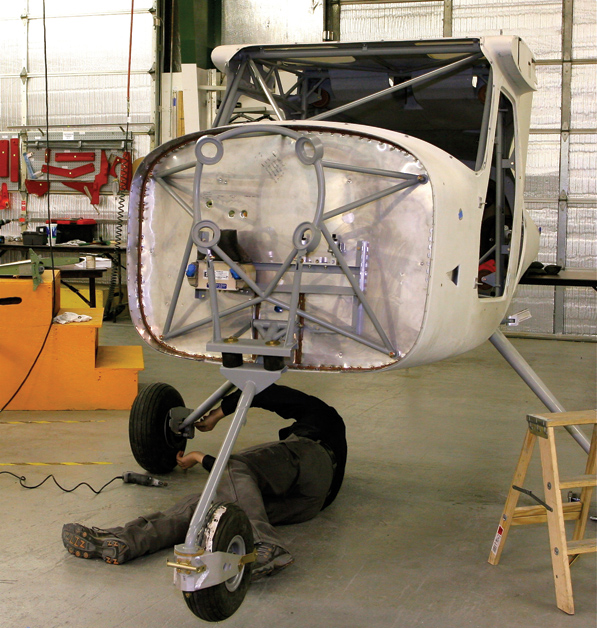
Besides progressive damage that occurs over time, engine mounts are also harmed by incidents and impact. Hard landings-particularly in airplanes that have the landing gear incorporated into the engine mount (a feature of many homebuilt designs)-can bend, break or crack a mount in a single blow. Taxi accidents, like hitting a chuckhole, can be just as bad. “Log incidents!” Albee said. “Even if damage isn’t apparent right away, a good description can help the mechanic when he inspects the airplane. An accurate incident description in the logbook can tell him right where to look for damage.” Listen to the man.
Next time the cowl is off your airplane, spare a thought for the engine mount. It’s been working faithfully, maybe for a long time. But like anything else, it can’t work forever without a little care and attention.










